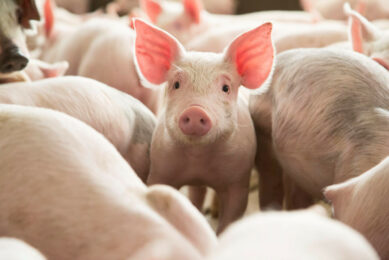Heavy metals found in Asia-Pacific feed materials
![Heavy metals found in Asia-Pacific feed materials [Photo: Studio Kastermans]](https://www.allaboutfeed.net/app/uploads/2020/12/001_131_rb-image-2818012.jpeg)
Of the 1,375 samples of minerals, premix and complete feeds from 16 Asia-Pacific countries submitted for testing in the 2016 Alltech Asia-Pacific Heavy Metal Survey, 20% were found to have contamination levels exceeding EU allowable limits for heavy metal contamination of arsenic, cadmium and lead.
This is the 6th year Alltech has conducted the survey in the Asia-Pacific region. “The results from this year’s survey were consistent with the results from the last 5 years,” said Tara Jarman, Alltech Asia-Pacific mineral manager. “We have now analysed more than 3,500 samples and our results continue to show that, on average, 20% of materials are contaminated with these heavy metals.”
Also read:
2015 Alltech Heavy Metal Survey
Results from the 2016 survey also indicated that 28% of more than 500 complete feed samples tested were contaminated with heavy metal levels above EU allowable limits. Alltech found that 38% of more than 100 samples of swine feed and 26% of more than 200 samples of poultry feed were contaminated.
“The contamination of complete feed shown in this year’s survey is alarming,” said Jarman. “This is a strong indication that what we’re ultimately feeding our animals is posing an ongoing risk to both animals and humans.” Arsenic, cadmium and lead are potentially toxic and can lead to decreased performance due to immune suppression or liver and kidney damage. “We are concerned that these levels of contamination also indicate potential risks for human health through the contamination of meat, eggs and milk,” said Jarman.
The 2016 Alltech Asia-Pacific Heavy Metal Survey highlighted the ongoing risk of contamination across a variety of materials, including inorganic trace mineral sources. Extremely high levels were seen in some mineral samples. Cadmium, a known carcinogen for humans, was detected at levels as high as 16,579 ppm in a zinc sulphate sample, whereas the acceptable EU limit is just 10 ppm.
“As we’ve seen in previous surveys, cadmium continues to be the main contaminant, which is likely attributed to the processes involved in the mining and manufacturing of inorganic mineral sources,” said Jarman. “We must ensure we have quality systems in place to ensure security throughout the food chain.”
[Source: Alltech]











